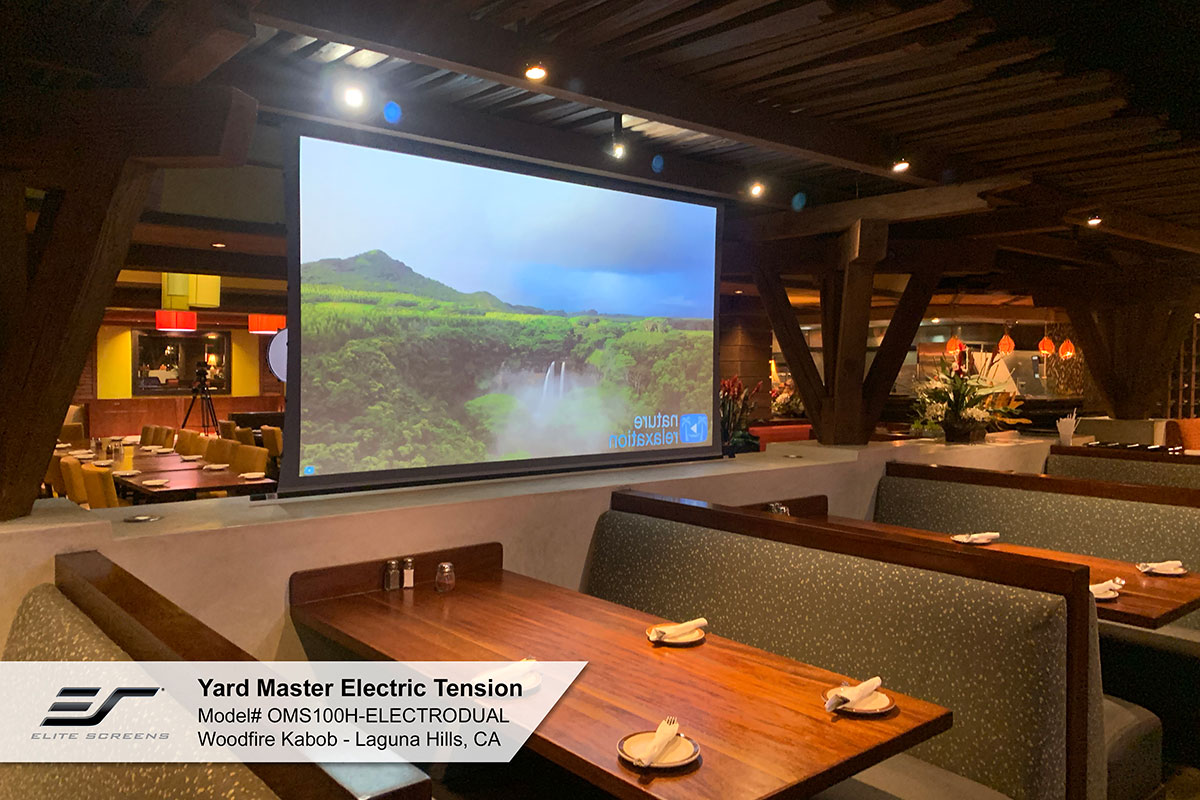The Benefits of a Rear Projection Projector Screen for Your Home Theater
Welcome to the world of immersive home theater experiences with rear projection projector screens! If you want to take your movie nights to the next level, a rear projection projector screen is a must-have addition to your home theater setup. Designed to deliver exceptional image quality and an enhanced viewing experience, these screens offer a range of benefits that will elevate your movie-watching or gaming sessions.

Advantages of rear projection screens over front projection screens
When choosing a projector screen for your home theater, one of the first decisions you’ll need to make is whether to go with a rear or front projection setup. While both options have their merits, rear projection screens offer several advantages that make them popular among home theater enthusiasts.
One of the key advantages of a rear projection projector screen is its ability to produce vibrant, high-definition images even in well-lit environments. Unlike traditional front projection screens, which can be negatively affected by ambient light, rear projection screens utilize a unique technology that allows them to maintain image clarity and brightness regardless of the lighting conditions in your room. This means you can enjoy your favorite movies or games without having to worry about closing curtains or dimming the lights.
Enhanced image quality with rear projection screens
In addition to their ability to handle ambient light, rear projection screens offer enhanced image quality compared to front projection screens. The unique construction of these home cinema screens allows them to reflect light from the projector at a wider angle, resulting in a brighter and more vivid image. This means you’ll enjoy sharper details, more accurate colors, and a more immersive viewing experience.
Another advantage of rear projection screens is their ability to accurately reproduce colors. Traditional front projection screens can sometimes distort colors, especially when viewed from an angle. On the other hand, rear projection screens offer wider viewing angles and better color reproduction, ensuring that everyone in the room gets a true-to-life visual experience.
Space-saving benefits of rear projection screens
One of the biggest advantages of rear projection projector screens is their space-saving design. Unlike front projection setups requiring a separate projector placed in the middle of the room, rear projection screens can be conveniently positioned against a wall or in a corner. This eliminates the need for a bulky projector setup and frees up valuable floor space in your home theater.
With their sleek and unobtrusive presence, rear projection screens seamlessly blend into your home theater aesthetics. Whether you have a dedicated theater room or a multi-purpose entertainment space, a rear projection screen can enhance the overall look and feel of the room without taking up unnecessary space.
Choosing the right size and aspect ratio for your home theater
When selecting a rear projection projector screen for your home theater, it’s important to consider the size and aspect ratio that will best suit your needs. The screen size will depend on your room’s dimensions and the viewing distance. As a general rule, the screen should be large enough to fill your field of vision without causing discomfort or straining your eyes.
Aspect ratio is another crucial factor to consider. Most movies and TV shows are produced in a widescreen format. Hence, a 16:9 aspect ratio is a popular choice for home theaters. However, if you’re a fan of older films or enjoy gaming, you may prefer a 4:3 aspect ratio. Ultimately, the choice will depend on your personal preferences and the content you plan to watch or play on your home theater system.
Installation and setup of rear projection screens
Installing a rear projection projector screen is a relatively straightforward process. However, following the manufacturer’s instructions and taking proper care is essential to ensure a smooth and hassle-free setup.
First, you’ll need to find a suitable location for the screen. Rear projection screens are typically placed against a wall or in a corner. Make sure the area is free from obstructions and provides enough space for the screen to be fully extended.
Next, you’ll need to mount the projector behind the screen. This can be done using a ceiling mount or a wall mount, depending on your preference and the layout of your room. Position the projector at the correct distance and angle for optimal image size and clarity.
Once the screen and projector are properly installed, you’ll need to connect the cables and adjust your projector settings to ensure the best possible image quality. It’s recommended to consult the user manual or seek professional assistance if you’re unsure about any step of the setup process.
Maintenance and care for rear projection screens
To ensure the longevity and optimal performance of your rear projection projector screen, it’s essential to take proper care and perform regular maintenance.
First and foremost, clean the screen regularly to remove dust, fingerprints, and any other debris that may accumulate over time. Use a soft, lint-free cloth or a screen cleaning solution specifically designed for projector screens. Avoid using harsh chemicals or abrasive materials that can damage the screen surface.
Additionally, be mindful of the ambient light conditions in your room. While rear projection screens are designed to handle well-lit environments, excessive direct sunlight or bright artificial lighting can still impact image quality. Consider using curtains or blinds to control the amount of light entering the room, especially during daytime viewing.
Lastly, checking and replacing the projector lamp when necessary is essential. The lamp is a crucial component of the projection system, and its performance can deteriorate over time. Most projectors have a lamp life indicator that will alert you when it’s time to replace the lamp. Follow the manufacturer’s guidelines and purchase a genuine replacement lamp to ensure compatibility and optimal performance.
Cost considerations and budget-friendly options
When it comes to rear projection projector screens, the cost can vary depending on factors such as screen size, brand, and additional features. While high-end options are available on the market, budget-friendly alternatives offer excellent value for money.
If you’re on a tight budget, consider opting for a manual pull-down rear projection screen. These screens are typically more affordable than motorized or fixed-frame options and can still deliver a great viewing experience. Keep in mind that manual screens require manual operation, so you’ll need to retract and extend the screen manually when not in use.
Another cost-saving option is purchasing a rear projection screen material and building your frame. This DIY approach allows you to customize the size and shape of the screen to suit your specific needs. It can be a more budget-friendly alternative for those who are handy with tools.
Conclusion
A rear projection projector screen offers a range of benefits that can significantly enhance your home theater experience. From vibrant and high-definition images to wide viewing angles and space-saving design, these screens are popular among movie enthusiasts and gamers alike.
Before deciding, it’s important to consider factors such as your room layout, personal preferences, and budget. Assess your needs and evaluate the advantages and disadvantages of rear projection screens compared to front projection options.
Ultimately, a rear projection projector screen can transform your home theater into a cinematic paradise, allowing you to enjoy your favorite movies, TV shows, and games in a truly immersive and unforgettable way. So take the plunge and elevate your home theater to new heights with a rear projection projector screen. Your future movie nights will never be the same again!
